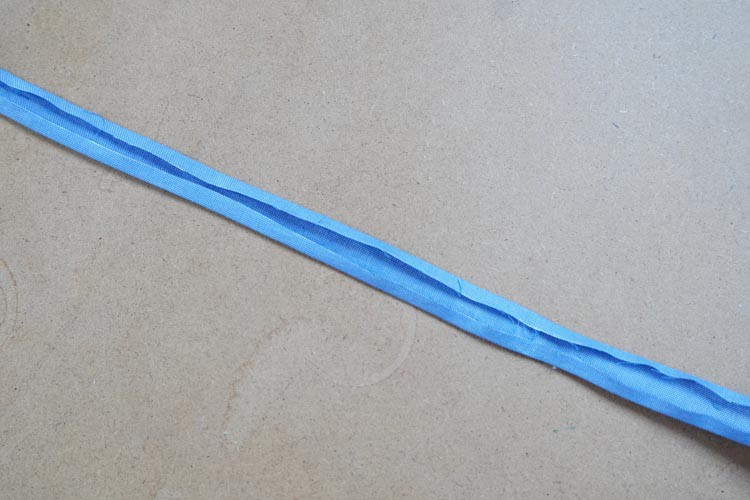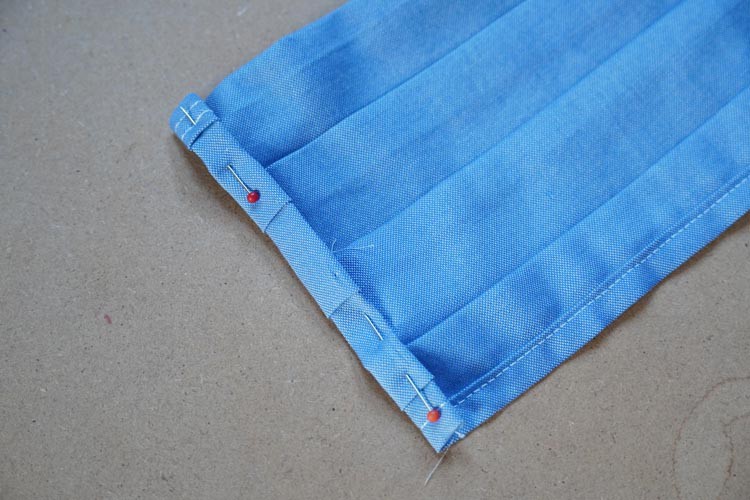I did not want to open this topic on my blog, because I am not an expert and I do not know to what extent are such cloth face masks suitable. But given the current situation, I finally decided to try to help at least a little. I’ve prepared an article with step-by-step photo instructions on how to sew a face mask at home and also pattern for the mask in three sizes, because I found that guides and tips on the Internet usually do not take into account children who have smaller faces, and men with larger faces. It’s necessary to sew the face mask to be as close-fitting as possible (around cheeks and nose). This should lower the risk of infection as much as you can reasonably expect from such DIY piece of protective gear.
UPDATE: I’ve added instructions on how to sew your face mask with a elastic band fastening. See the end of the article after reading part about face section of the mask if you want to sew your mask with elastic band instead of the classic ribbon fastening.

Pattern
You can download pattern (template) for the mask in three sizes from here:
Sizes
Piece for the men’s size is essentially a 25×25 cm square, the women's size is a 20×20 cm square (also suitable for older children) and for smaller children the square size is 15×15 cm.

How to sew the face mask
Use the link (button) above to download mask pattern, print it and glue pieces together.


Cut the square of the fabric according to the pattern.

Use scissors to copy marks from the pattern to your piece along both sides.


Fold top and bottom edges to the reverse side twice to create a which will prevent the fabric from fraying.

Sew through the hems on both edges.


Use marks on the sides to create pleating. Start from the top - overlay two uppermost marks to fold the fabric (face side in).


Fold the upper part back towards the top to create first “accordion fold”.



Secure both sides of this fold with pins.

Use rest of the marks to finish the pleating in the same way (4 “accordion folds” in total).


Ribbon fastening
Prepare two fabric stripes. They should be 3,5 - 4 centimeters wide and 1 m long.

Fold longer sides of your ribbons towards the centerline and iron the folds.

You can fold shorter edges towards the reverse side to prevent fraying.

Fold the ribbon in half along the centerline to keep its cutting edges “inside” and iron this fold.


Insert pleated face mask to the inside of the ribbons.


Sew through the ribbons along the entire length. This will reinforce them and attach them to your face mask.


Elastic band fastening
Prepare the face section as described above and two pieces of a narrow elastic band. They should be 18-20 cm long for men, 15-16 cm long for women and 12-14 cm long for children. Sew through the pleated edges of your mask.

Fold edges towards the reverse side.

Insert ends of the elastic band to the fold. Sew through the folded edges of your mask to reinforce it and attach the band to the face section.


CAUTION:
- Make sure your hands and fabric are clean before you start sewing.
- Use natural fabric - ideally dense cotton canvas (you can also use linen canvas, but it is said to have a weaker protective effect).
- DO NOT USE SYNTHETIC MATERIALS (polyester, etc.) - they are impermeable, and you will get sweaty quick when wearing them.
- Face masks should always be washed and ironed before use. Use highest washing temperature you can.
- When you remove the mask at home, wash it immediately.
- It is not recommended to use the cloth mask for more than two hours at a time. If the mask gets damp (breath, ambient moisture...), replace it immediately.
- MOIST/WET FACE MASK IS A GREAT ENVIRONMENT FOR BACTERIA - REPLACE IT OFTEN!
DIY CLOTH FACE MASKS OFFER A WEAKER PROTECTION THAN A PROFESSIONALLY MANUFACTURED SURGICAL MASKS, BUT SOME PROTECTION IS BETTER THAN NONE!
You can read more about the issue in this study, for example.
Try to stay healthy - protect yourself and those around you.
Please share this article (and pattern) with as many people as you can. Everyone needs to protect themselves as much as possible!




















